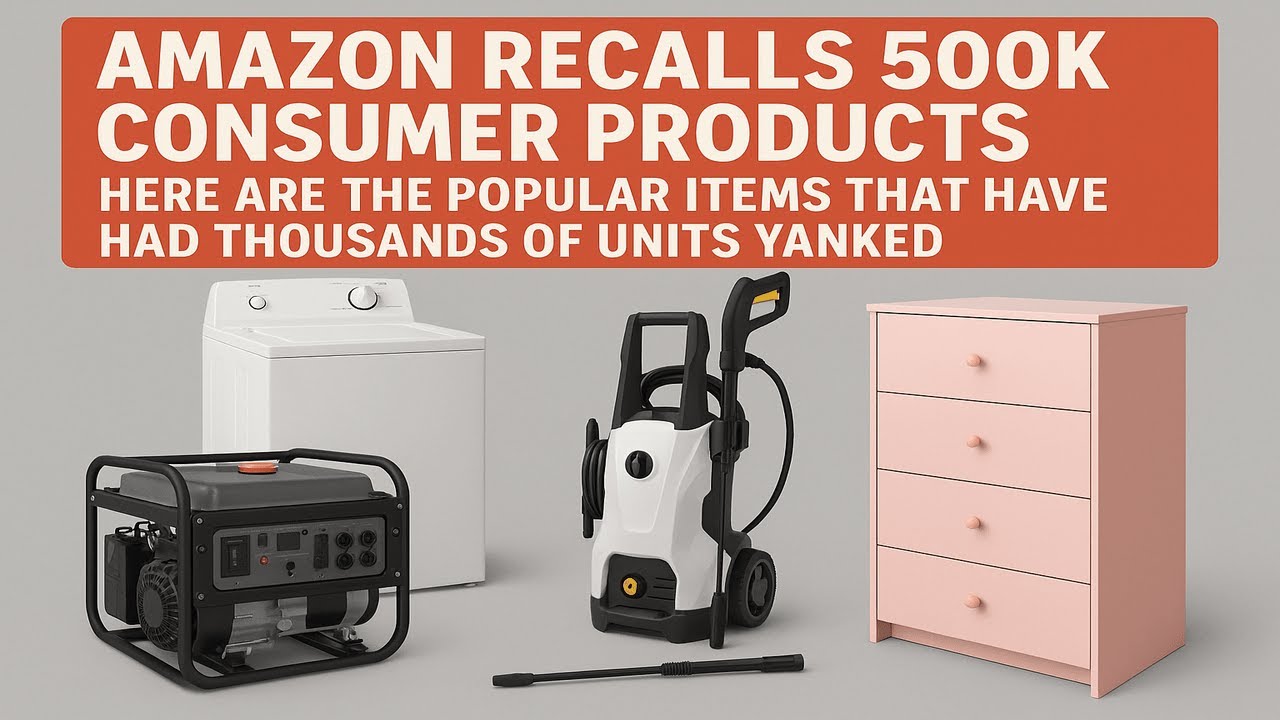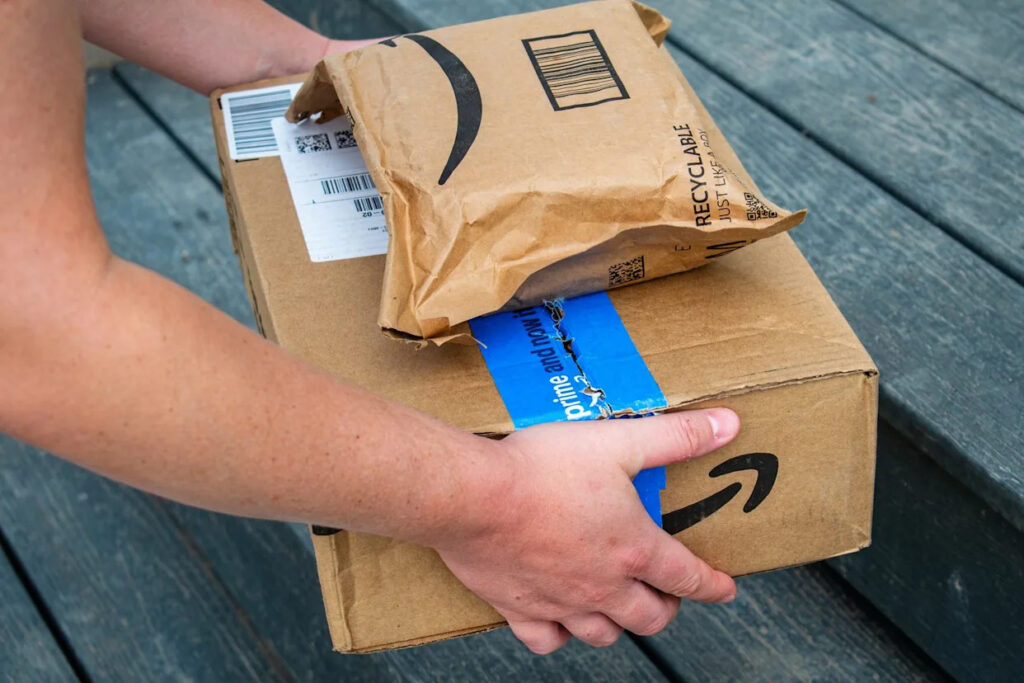“From everyday household items to gadgets, more than 500K products sold on Amazon are being recalled over safety concerns.”
Online shopping has become second nature for millions of people, with Amazon leading the way as the go-to marketplace for everything from kitchen gadgets to kids’ toys. But a recent announcement has left many shoppers uneasy: more than 500,000 products sold on Amazon have been recalled over serious safety concerns.

For customers, this isn’t just about faulty items—it’s about trust. When you click “Buy Now,” you expect what arrives at your door to be safe for your family and your home. This massive recall, however, highlights the challenges of monitoring such a vast marketplace and the risks that can slip through the cracks.
As Amazon works to pull these products from its shelves, consumers are left asking an important question: Did I buy one of them?
What Happened: Amazon’s Recall Announcement
In a move that caught the attention of millions of shoppers, Amazon announced a massive recall of 500,000 products from its marketplace. The recall spans a wide range of items—everything from household essentials to electronics—and comes after reports of safety concerns tied to some of these products.
The company confirmed that these Amazon recalled items were flagged for risks such as potential fire hazards, faulty wiring, and other defects that could put consumers at risk. While Amazon regularly removes unsafe products, the scale of this recall makes it one of the largest in recent memory.
For many shoppers, the announcement raised immediate questions: Which items are included? Did I unknowingly purchase one of them? Amazon has said it is working with regulators and manufacturers to notify affected customers and ensure refunds or replacements where necessary.
This Amazon recall news underscores just how challenging it is to police such a vast online marketplace—where millions of products are listed daily by third-party sellers.
Why These Products Were Recalled
The big question most shoppers have is simple: Why were so many products pulled from Amazon’s shelves? The answer comes down to safety. Reports surfaced that several of these items posed risks ranging from electrical malfunctions and fire hazards to choking dangers for children and structural failures in everyday products.
In short, these weren’t just small defects—they were potential accidents waiting to happen in people’s homes. For example, faulty chargers could overheat, children’s products could break apart, or household tools could malfunction in ways that put users at risk.
Amazon stated that it moved quickly after investigations and consumer complaints brought these problems to light. The Amazon product recall was not just about protecting buyers in the moment but also about reinforcing trust in the platform. After all, when customers shop online, they expect convenience and safety—not surprises that could harm their families.This recall is a reminder of the hidden risks that sometimes slip through in the fast-paced world of e-commerce and why product safety remains such an important part of online shopping.
How Consumers Are Affected
For everyday buyers, this recall isn’t just a headline—it’s personal. With over 500,000 recalled products, many Amazon shoppers affected are now left wondering if something sitting in their living room, kitchen, or even a child’s bedroom is on the list.
The recalled products impact goes beyond inconvenience. For some families, it raises serious consumer safety concerns, especially when it involves electronics that could spark fires or children’s items that could pose choking hazards. Suddenly, what felt like a simple purchase starts to feel like a risk.
Amazon has promised to notify buyers directly and provide refunds or replacements, but that doesn’t erase the stress and uncertainty shoppers face in the meantime. For many, it’s a reminder that online convenience should never come at the cost of safety.
At the heart of it, this recall is not just about products—it’s about protecting trust. Amazon knows that every click of the “Buy Now” button comes with a promise of reliability, and consumers will be watching closely to see how the company handles this massive challenge.
Amazon’s Response and Accountability
In the wake of this massive recall, Amazon’s response has been swift but also closely scrutinized. The company stated that customer safety is its top priority and that it has already removed the recalled products from its marketplace. Beyond that, Amazon says it is reaching out directly to affected buyers to arrange refunds, replacements, or clear instructions on what to do next.
But accountability goes deeper than just pulling items off the shelf. With millions of products sold by third-party sellers, shoppers are asking how such unsafe items made it onto the platform in the first place. Amazon has pledged to strengthen product monitoring and seller requirements, aiming to tighten checks before items ever reach consumers’ carts.
This is not the first time Amazon has faced questions about product safety, but the sheer size of this recall makes it a defining moment. For Amazon accountability, it’s about more than fixing a single mistake—it’s about proving to millions of loyal customers that they can trust the marketplace to safeguard their homes and families.
At the end of the day, actions will speak louder than words. How Amazon handles this recall could shape how shoppers view the brand for years to come.
The Bigger Picture: Online Marketplaces and Safety
This recall isn’t just about Amazon—it shines a light on a bigger issue facing the entire world of e-commerce. With millions of sellers listing products online every day, marketplaces like Amazon, eBay, and others face the enormous challenge of keeping unsafe or faulty products out of customers’ hands.
For shoppers, the convenience of one-click buying is irresistible. But behind that convenience lies a system that has to balance speed, variety, and—most importantly—safety. When recalls like this happen, it becomes clear how easily consumer safety concerns can slip through the cracks.
The bigger picture is about accountability across the online retail industry. If one platform struggles with monitoring, chances are others face the same problem. It raises important questions: Should stricter regulations be put in place? How much responsibility should marketplaces take for the products third-party sellers list?

At the end of the day, protecting customers has to come first. Shoppers want confidence that when they click “Buy Now,” they’re not just getting a good deal—they’re getting something safe for their homes and families. This recall is a wake-up call not just for Amazon, but for the entire online shopping world.